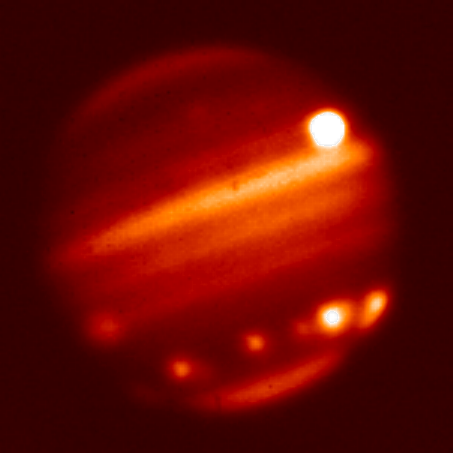P
portugal
Guest
It should have been a big object.
When it was SL9 we got some points on it and saw the energy and the "damage" to the higher jupiter atmosfere.
That time we could saw the impactors moving towards the planet... this time nobody saw it.
So it could be a small object that blowup on the diving to the jupiter higher levels or a big object that was just atracted to jupiter directly by it´s gravity pull.
But the pictures are something that looks bigger than joining most parts of the SL9 diving through jupiter...
When it was SL9 we got some points on it and saw the energy and the "damage" to the higher jupiter atmosfere.
That time we could saw the impactors moving towards the planet... this time nobody saw it.
So it could be a small object that blowup on the diving to the jupiter higher levels or a big object that was just atracted to jupiter directly by it´s gravity pull.
But the pictures are something that looks bigger than joining most parts of the SL9 diving through jupiter...




